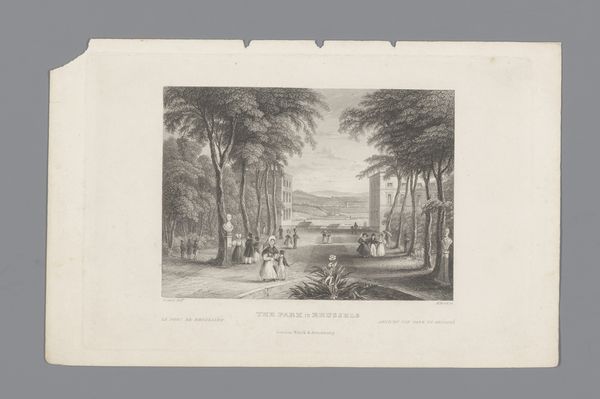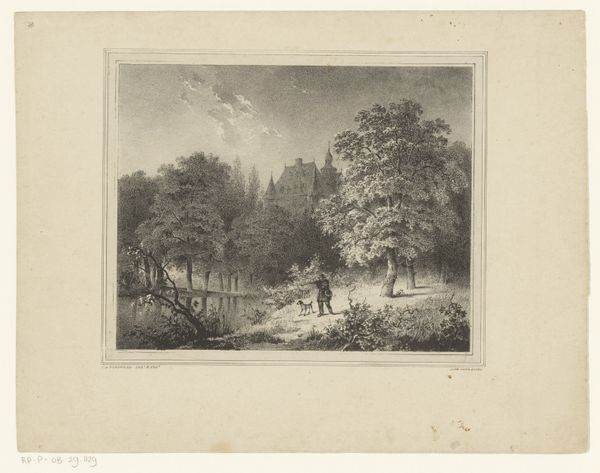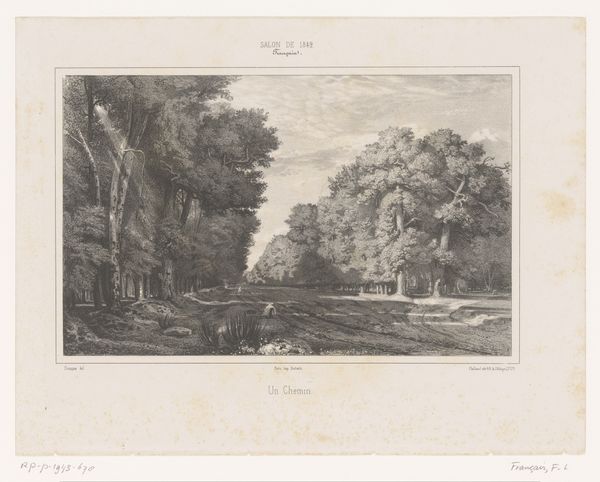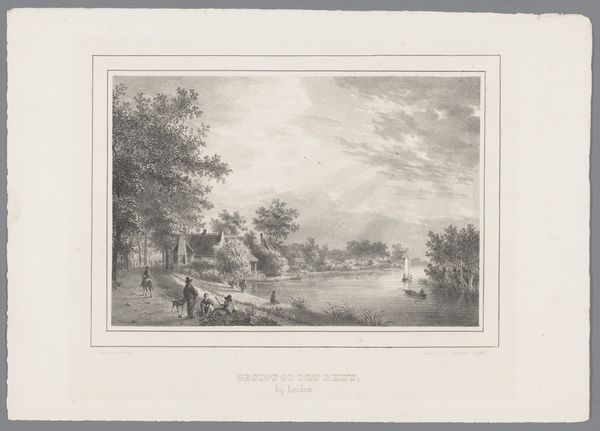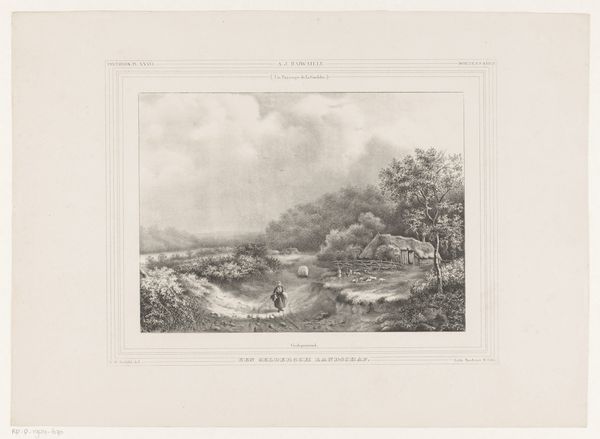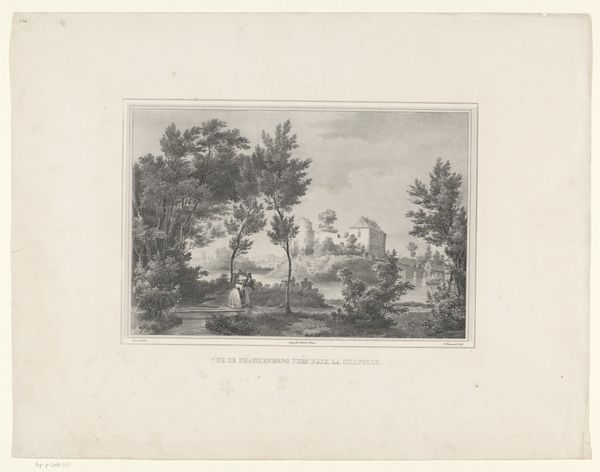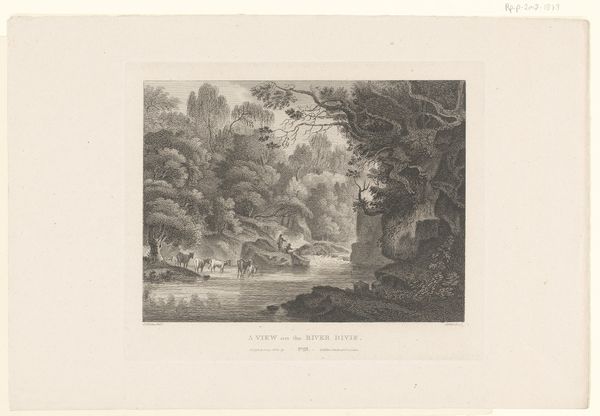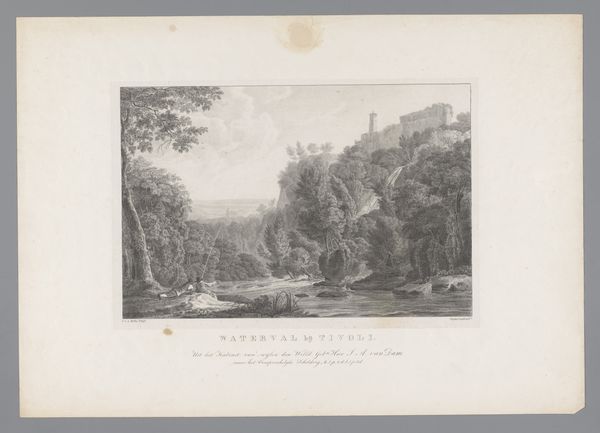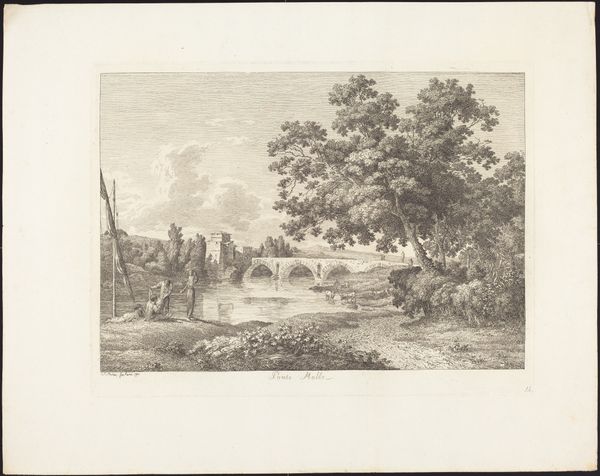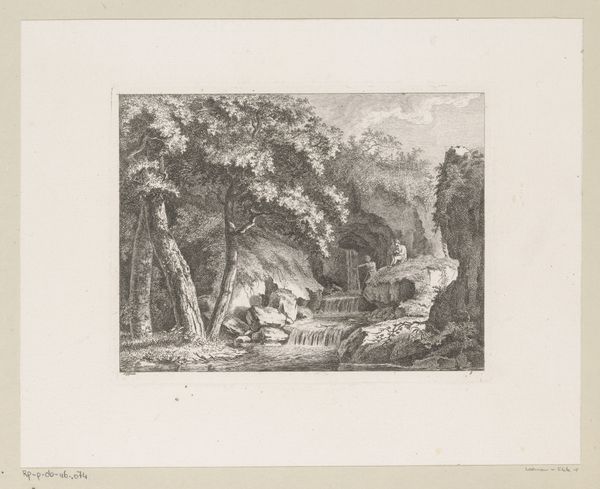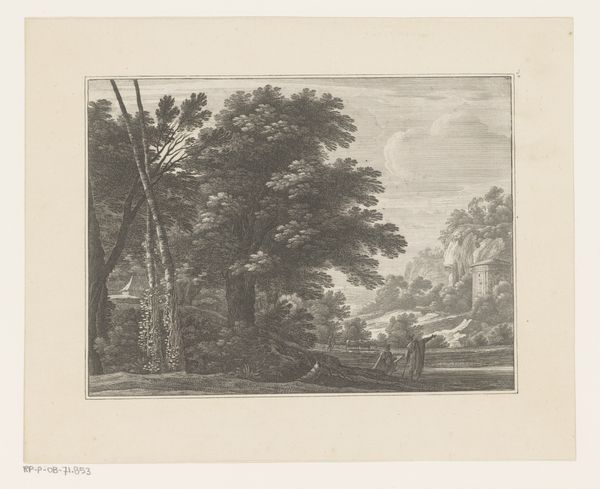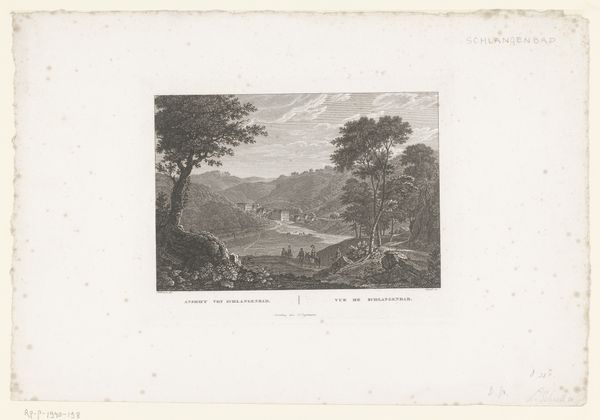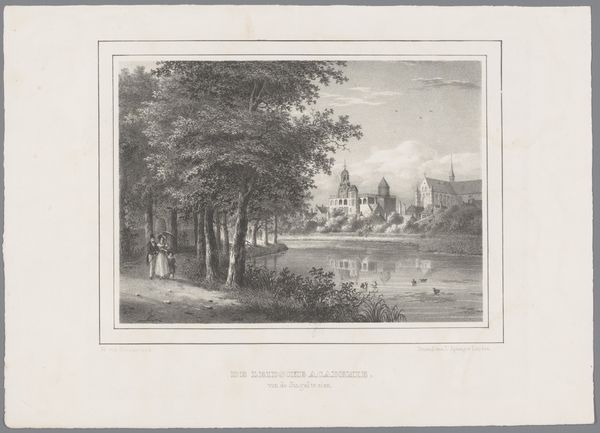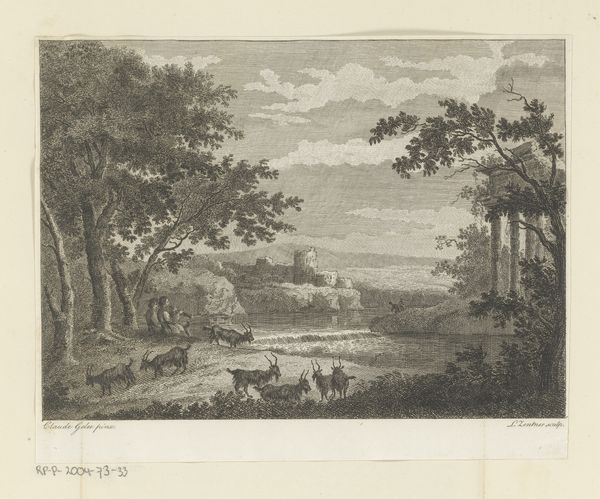
drawing, print, paper, ink
#
drawing
# print
#
landscape
#
paper
#
ink
#
romanticism
Dimensions: height 361 mm, width 550 mm
Copyright: Rijks Museum: Open Domain
Editor: Paulus Lauters created "Vrouw aan het tekenen bij de Marche-les-Dames," between 1839 and 1841, using ink on paper; it's currently held at the Rijksmuseum. The quiet stillness of the scene almost invites introspection. What do you see when you look at it? Curator: The enduring symbol of the artist captured in the act of creation carries a powerful romantic weight. The image isn’t simply a landscape but a carefully constructed visual poem. Note how the framing by the trees both conceals and reveals the landscape. This is the duality of Romanticism - revealing and concealing, evoking longing for what we can never grasp. The artist’s gaze then becomes ours; we observe her observing the world. It reflects humanity's endless quest to capture and understand nature. What do you feel that says about our relationship with the world around us? Editor: That we desire to control it by documenting it? To hold it still? Curator: Precisely! And that's deeply embedded in cultural memory. The very act of drawing transforms the ephemeral landscape into something lasting, echoing the desire to conquer time, to leave a mark. How does this resonate with contemporary issues of environmental preservation, the struggle to hold onto what we're losing? Editor: I hadn’t thought of it that way. I was focusing on the beauty, the… idealized beauty, but now I see the layer of grasping for something that can’t truly be held. Curator: It becomes a meditation, doesn't it? On our relationship to nature, and to time. Each element becomes a signifier: the water a symbol of flowing time; the rocks represent solidity; while the figure, poised in her act of art, reminds us of human striving for meaning and purpose. Editor: It is more complex than I initially realized. Thank you for sharing your insights!
Comments
No comments
Be the first to comment and join the conversation on the ultimate creative platform.
